One of the most difficult things to explain to American university students is how capitalism and communism share far more in common than they do in conflict. In fact, regardless of how it is explained, the old saw that the two approaches are "opposites" can never quite penetrate. Even worse, explaining to students and their bewildered parents that the US banking and industrial conglomerates financed the Soviet Red revolution and built Soviet industry is also maddeningly impossible.
One simple way to explain it is to say that, for bankers in the modern era, the state's control of the entire economy from one place is what bankers believe paradise to look like. There is one plan, one banking system and one social system in place; this means that banks merely forward the cash, both expecting the state, not the economy as such, to reimburse them with the requisite interest. In other words, the command economy is the most congenial to banks. There is no necessary connection between private banking and a state-owned economy. It is just as simple for a banker to work for the Party as it is for Goldman-Sachs.
Capitalism and socialism are based on materialism. Production and utility alone are considered goods, and efficiency in methods is considered the sine qua non of ethical contemplation. Both systems are oriented to technology, hold to a linear view of history, and seek the mechanization of all aspects of humanity. As they both develop, the economic system and the state merge into a single machine. The error of the libertarians has always been their insistence that the state and private capital are opposed. Quite the opposite is true. Large concentrations of capital are deeply embedded in the state, using it as both a personal bodyguard and as a regulator that keeps market entry impossibly high. The defeat of the Justice Department by Microsoft in 2010-2012 shows the imbalance of power between private capital and the state.
This might seem tangential to a work on banking. For the typical isolated and tenured professor of political economy, it would be. For those, such as Mr. Goodson, who served on the Board of the Central Bank of South Africa for many years, isolated academia seems absurd. Mr. Goodson was anything but isolated, and he witnessed the tight control of economic life by banking conglomerates the world over. He saw it in vivid colors.
This book is not a study in technical economics. It is, thankfully, a study in history. Goodson realizes what most economists do not: that to grasp any economic phenomenon, it must be seen as a product of many decades of historical development. Each aspect of the whole continually reinforces the other, and the whole itself is constantly changing, like an organism, as history continues to present new challenges, new projects and new victims.
In other words, the secret life of banks did not merely occur because a group of men off the coast of Georgia wanted it to. They themselves were actors within a historical stream that goes back to the first Mesopotamian civilizations and reached its ancient zenith in Rome. The fact that the whole has continuously been based on the same set of assumptions regardless of the civilization within which it was embedded is impressive, and it calls out for detailed analysis. Given the political fallout from such honesty, however, Mr. Goodson needed to resign himself to the fact that few in the mainstream will even mention his work, let alone accept it.
There is one constant in history that is manifestly clear in this work: that the essential distinction between monarchy and republicanism (broadly speaking) is economic. Republics are normally oligarchies, or at least contain its seeds. Monarchies, since they are perpetually at war with their own nobility, often reject the assumptions of oligarchy. Whether it be the national socialist party of China or Belarus, the royal bank of St. Petersburg or the centralized dictatorship of the Augustan era, all forms of strong statism has made war on the banking monopoly. No authoritarian leader will accept competition from an all powerful economic mediator. Of course, there are a few exceptions on both sides, but history has been fairly clear that strong states, those based on traditional authority, reject the alchemy of money and interest.
Rome
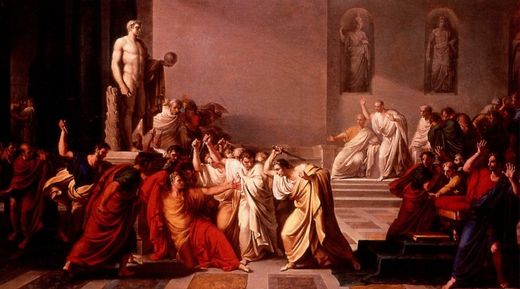
In Byzantium, the Roman empire of the East, interest had been officially limited to 5%, give or take, but this could only be enforced under emperors who were strong. Basil II for example, rejected interest altogether and forced wealthy landowners to financially assist poorer peasants. His strength, while common, was usually followed by an aristocratic reaction who placed puppet emperors in Constantinople. However, under such a system, eastern Rome was blessed with a vibrant, populist economy. Her currency was the global standard as far east as China. Peasants were free landholders and feudalism existed nowhere. Inflation did not exist, and trade flows always favored the capital. For this reason, oligarchic states such as Venice, Dubrovnik and the Norman interlopers in Sicily, continually financed Rome's enemies.
After 1204, when the western Norman Crusaders sacked Constantinople, the dominance of Venetian oligarchs became the order of the day. Byzantium was marked for death once the emperors of the 14th and 15th century gave away their financial autonomy for regular infusions of Venetian money. Having lost all economic independence and seeing the immense wealth of the east flow in interest payments to Italy, Byzantium finally collapsed under an Italian-financed Turkish invasion in 1453. Venice became Turkey's most significant ally.
There is no economic mystery here. Whenever interest is tightly controlled, the continued compound leakage of cash to banking centers does not exist. This financial hemorrhaging means that value remains where it belongs: with the small businessman and small landholder. Without the geometrically increasing mass of interest, a fraction of today's total labor was sufficient to maintain monetary stability, necessary supplies and a nobility forced to serve the state rather than rule it. Within the modern system of usury, centralization is unavoidable as compound interest continually increases the flow of real value out of the economy and into the coffers of the cabal.
England
England was no different. Prior to the Norman invasion, Anglo-Saxon England, even after the Viking attacks, existed in a financial golden age. Again, smallholders were the norm, urban trade maintained low prices, and the lack of liquid capital forestalled any noble centralization. Feudalism could not exist under such a system. Usury was banned in Mercia under Offa the Great, and in Alfred's frantic attempt to centralize power in Wessex against the Danes, he too, refused the "services" of the banking cabal. The Italian banks, however, were quite interested in William's planned assault on Anglo-Saxondom and to remove Scandinavian influence from England. Usury was permitted, for a time, under the new Norman hegemony. The old Anglo aristocracy was slaughtered, and William imported a new nobility with close ties to Italy. Feudalism made its very first appearance on English soil. Ireland, several centuries later, was also to see the benefits of Norman progress.
Such progress, by the time of Stephen, led to the creation of a banking system charging an average of 33% on collateral lands and 300% on capital (that is, tools in the cities). Within two generations, a full 66% of England's lands wound up in the hands of Italian and Jewish bankers. This might explain the constant drive to take more and more French land for the Angevin Empire.
This was to be the lot of Norman Britain until the reign of Edward I (d. 1307), who imitated the Byzantines (where many Anglo-Saxons had been serving after 1066) by tightly limiting interest and its accumulation. Kicking the bankers out of the country, he ushered in an age of prosperity unfortunately cut short by the plague. It is no accident that just at the time when Byzantium had given away its economic sovereignty to Venice for the use of their navy, Britain moved in the opposite direction against Italy and Rome.
From the reign of Edward I to the plague, England was prosperous. The working year amounted to 14 weeks, within which all essentials were obtained. The church calendar, in both eastern and western Europe, required between 100 and 140 days off a year, excluding Sunday and the period after Easter. Of course, capitalism was to make war on the church and seek Protestant sanction for eliminating saints days from the calendar altogether. The rule of the small holder had returned for the first time since Edward the Confessor. Unfortunately, this was not to last. The reformation, once Luther's influence had waned, had different ideas on money.
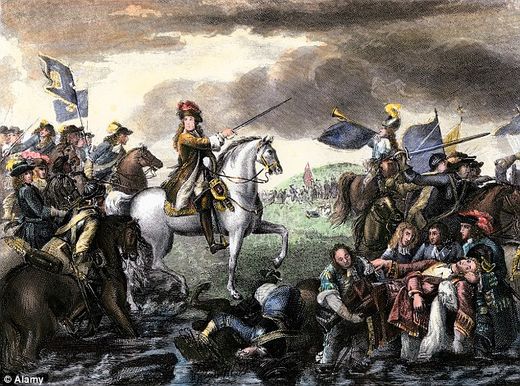
Spain, once Islam was finally ejected, sought to cleanse itself of the Sephardi, normally allies of the Muslim Caliphate. Spain's nationalism was substantial as both church and state were radically reformed and purged. Moving to Amsterdam, the Sephardi rebuilt its banking base, creating a "square" of influence that contained four corners: the grain trade in the Baltic, the Amsterdam banks, Constantinople and the Turkish market, and most importantly, Poland. These represented the overland routes of modernity as grain prices skyrocketed in the west, forcing the east to export more and more.
Under Elizabeth and certainly during and after the English Revolution, Spain was the enemy. Catholic Ireland sought Spanish assistance against Elizabeth's dispossession of the native Gaels, something that Cromwell was to punish with genocidal harshness. Spain's importation of silver from the new world threatened the rule of the banks in a graphic way. The banking regime financed the Dutch rebellion against the Spanish as the world's press spared no rhetorical excess denouncing the Spanish army in northern Europe. British enemies of the banking elite looked to Spain for assistance as well.
Once Charles I was defeated in 1645 and Cromwell instituted a military dictatorship over Britain and Ireland in 1653, the banking regime now had its enemies destroyed and its place assured. William's gentle occupation of Winchester 30 years later meant that the bankers now had England to use against both France and Spain. It surprised no one that the Jacobites spent much time attacking the banking elite that had taken power with such vehemence. Neither James I or II believed in "divine right" nor did either want to impose a dictatorship. Cromwell alone sought that honor. Yet the James's were accused of every imaginable crime. James sought religious tolerance, not a "Spanish theocracy", as the Whigs were later to claim. Whiggery was the party of usury and, as such, the party most vehement in seeking war with France, Spain and, eventually, Russia.
Parliament, now the instrument of capitalism and empire, was seeking any excuse to take revenge on Spain. "Democracy" and " the will of the people" were considered identical to the interest of urban merchants and traders. Britain was now an oligarchy. Roman Catholic rulers were long forbidden to rule in London, regardless of James' desire for religious neutrality. William's war with France was financed by the Amsterdam banking establishment, something made quite clear to William himself when he tried to arrange a Stuart marriage, one which remained childless.
Ukraine and Poland
It is certainly no coincidence that the rule of Cromwell and the slow genocide of Irish resistors and English Jacobites occurred at the same time the opposite development was taking place on the other "pole" of the Jewish "trade square." Population growth in the west, as well as the growing centralization of states, led to an increase in grain demand. This meant, among other things, that the nobility needed to intensify its serfdom over peasants and force more production towards export.
The Polish nobility had given Jews a full monopoly over overland trade, urban life, lease-holding and alcohol. Mainstream sources on Ukrainian history all are forced to admit this. The impotent Polish monarchy sought to gain power, as was the case elsewhere, through an alliance with the towns. Seeing this as a threat, the Polish nobles countered this by bringing in Khazar Jews searching for a new home after the fall of Ity'll centuries before. Not only did they find it, but their mainstream power and success reached such heights that rabbinic claims that the 17th century was a "messianic" time were common. In fact, it was a common claim amongst the more religious Jews that the time of the Messiah was at hand. They got the revolt of Cossack Hetman Bogdan Khmelnytsky instead. Khmelnytsky's insurrection was the opposite of Cromwell's. The Cossacks fought against a long-standing oligarchy, while Cromwell sought to establish one.
The rising of Khmelnytsky in 1648 was the single event that defined Ukrainian nationalism for eternity. Nothing was the same. Poland almost collapsed. Jews had to flee for their lives. The Crimean Tartars were able to free themselves from vassalage to Turkey. Rome was in a panic as their churches, long associated with usury, were burnt to the ground by Cossacks, well remembering that their existence was based on the ruins of Orthodox churches a century before. Still reeling from the Reformation, Rome now faced the eradication of its existence in the east too. The Patriarch of Jerusalem, Paisios, declared Hetman Khmelnytsky "The Monarch of All Rus." Russia, Vienna, Prussia and Paris were now able to centralize power and defy Rome. Russia had a particular gripe with Rome since it was the papacy who declared a Crusade against northern Russia in 1256, financed Mongol expansion, and declared the Polish attack on Ukraine a "holy war." While Paris and Vienna remained Catholic, theirs was a national Catholicism where the crown, not Rome, began selecting bishops. It was not to last.
Rome managed to talk the Crimeans into abandoning the Orthodox Slavs. The death of Hetman Khmelnytsky in 1657 led to a division in the Cossack host between hetmans of the two banks of the Dnieper at war with each other. Hetman Ivan Vyhovsky and Pavlo Teteria sought a Polish alliance, Briukhovetsky in the east went to Moscow, and Doroshenko, in desperation, approached the Turks. In 1708, Hetman Ivan Mazepa allied with the Swedes. Disaster resulted, the old Ukrainian culture was destroyed by Peter I, Turks and Crimean Tartars without mercy. Among Ukrainian historians, this period was known as the "Ruin."
As Russia moved closer to the Dnieper, Vienna became alarmed at the possible Russification of most of the east (including the Balkans) and mobilized against her. Given some breathing room, Poland recovered her former stability and the nobles returned. A century later, the Cossack Haidaimak rebellions led to the unthinkable: the treaty of "eternal friendship" (that is, the Treaty of Andrusovo, 1667) between Poland and Russia dividing Ukraine between the two empires. The Haidaimak rebellion was crushed by a concerted effort of Moscow and Krakow, and all was precisely as it was before 1648.
Like in England, under Cossack rule, society was divided into counties, with full local democracy and a total lack of interest and usury. The typical results followed: the traditional Slavic smallholder communities reemerged and a basic political and economic equality re-emerged. The gradual encouragement of a Cossack aristocracy, financed by St. Petersburg, led to the imposition of an oligarchy that made it very easy for Catherine II in the middle 18th century to put an end to the Hetmanate forever.
The United States
The decentralized colonies of the US were generally prosperous. Plentiful land, excellent ports and a strong pioneer spirit created an advanced world out of practically nothing. When asked about this, Benjamin Franklin famously remarked:
"That is simple. In the colonies we issue our own money. It is called colonial script. We issue it in the proper proportion to the demands of trade and industry to make the products pass easily from the producers to the consumers. In this manner, creating for ourselves our own paper money, we control its purchasing power, and we have no interest to pay no one."With one exception - the detestable Alexander Hamilton - the American founders, though differing on nearly every other issue, were of one mind on banking. It was something to be abhorred. The dollar remained steady until 1917. The boom and bust cycles since the Civil War, the vast rise in federal power, World War I and the coming American imperium, however, helped set the stage for a privately owned camarilla in the US as well, popularly known as the "Fed" or the Federal Reserve ("Federal" in this case should be taken as it is in the shipping company "Federal Express").
The fact is that the fears of the Anti-Federalists were correct: the US government in Washington had become extremely powerful, arrogant and cut off from the common run of Americans. They had long been in thrall to the oligarchy in embryo, soon to burst forth in the form of the Fed, the Rockefeller Empire, the Carnegie Cult, and the warfare state tested in the Spanish American war and in the final months of World War I.
From 1914 to 1920, prices rose 125%, as Goodson depressingly recounts. The dollar lost almost 60% of its value in six years. Federal bonds saw their value drop by 20% at the same time, meaning that older bonds became more dear. Yet, the newer, cheaper bonds led to a recall by the banks which, of course, meant that the money came due.
More instability was caused as the railroads and other modes of transport became more expensive. Small farms, the long standing linchpin of American prosperity, were slowly priced out of existence, which, in practice, meant a massive wealth transfer from the countryside to the cities. Agricultural production dropped by 50%. The war on rustic America was declared, and has yet to end. The deficit was soon to be made up by Agribusiness, made possible by centralized credit attracted to large conglomerates, seen as a safer bet, rather than small businesses.
In 1927, the Fed lowered rates and thus, increased the money supply. This was the reign of the "roaring twenties," the beginning of the oligarchy as an uncovered, exposed and confident entity without serious resistance. This meant that money was seen as value and power in its own right, detached from actual manufacture. The wealth generated went to the stock market, boosting demand and inflating prices. Margins were augmented through debt, and the price-earnings ratio went as high as 50:1, that is to say, the stock price was many times higher than the actual productive nature of the invested capital. Put differently, stock prices had no relation to the financial health of the firms involved, the productivity of labor, or the consequent value-added.
Thus, in 1927, the US stock market was a fraud. Prices were based on speculative investment, easy money and the perception, one that remains an enigma to psychiatry, that such faux-growth would last forever. It made little difference how healthy the companies were in reality. In 1929, the Fed increased rates to 6%. The signal was clear: the stock market as a whole, saw its value drop by 83%. 10,000 banks became insolvent, and brokers, working on debt bubbles, were ruined.
Russia
Russian economic prosperity and growth commenced at the liberation of the serfs by Alexander II in 1861. Serfs under state control had been freed earlier by Tsar Nicholas I. As is quite often the case, the most autocratic of monarchs were the only ones confident enough to pass legislation in the interests of the peasants. Unlike the liberation of Austrian serfs or the freeing of American slaves, Russian serfs were emancipated with land. The state compensated the eternally indebted nobility and, over time, the peasant was to repay the state. The payments were very low and Tsar Alexander III canceled them altogether. This was just one more nail in the nobility's coffin.
Russian serfs had never been slaves. Serfdom, a reaction to the Swedish and Polish invasions of the 17th century, affected only southern peasants in the black earth regions. It never existed in the north nor in Siberia. In central Russia, it affected only serfs required to perform labor dues, but by the 1840s, most peasants paid money rent, which meant they were tenants rather than serfs. Serfdom in Russia really meant the guarantee of peasant land ownership and, at the same time, the assurance of noble incomes as they served the state, usually in a military capacity. Since everyone served someone, the system was balanced. Under Tsar Paul and his mother Catherine II, the nobles were liberated from state service and, as a result, became politically sterile.
Peasants had full self-government in the commune, where all posts were elected. The volost, or county government was also wholly elected, with equal representation for all classes. The court system both at the volost and commune level was supported on pure peasant democracy. Communal judges were exclusively peasants, and volost courts had two noble and two peasant representatives. For the most part, Russian nobles were fiscally worse off than the peasantry, drowning in debt and long released from any useful work. They had little to do but buy expensive western luxuries they could not afford. The peasant commune had the right to nullify federal law, and was generally self-sufficient in economics and social life. If anything, tsarist Russia suffered from excess democracy.
In 1861, the volost was replaced by the zemstvo, a county administration with a lower house of peasants and an upper house of nobles, usually poor to middling in wealth. The zemstvo was in charge of education, infrastructure, church life, tax collection and police. There was no part of peasant life that was not based on local democracy. A "land captain," usually a poor noble, was elected to mediate conflicts between peasants and nobles, and sometimes, peasants would go to the captain if he had a beef with the commune or the zemstvo authorities.
Hence, the freedom of the serfs and the creation of a free press, the zemstvo and an endless array of educational improvements put a bullet in the revolutionary movement, almost entirely financed from Britain. Seeing this as intolerable, Alexander II was assassinated for his trouble in 1881. His son, Alexander III, continued his father's reform programs but, being a man of immense size and strength, smashed the revolutionaries, rendering them ineffective until his premature death in 1894.
Tsar Alexander III established the Peasant Land Bank in the early 1880s, which gave interest-free loans to peasants and sought to channel investment money into agricultural improvement. Tsar Alexander and his finance minister, Nikolai Bunge, drafted and passed the most comprehensive labor regulations in European history. His son, Nicholas II, continually added to them until the outbreak of World War I.
In labor relations the Russians were pioneers. Child labor was abolished over 100 years before it was abolished in Great Britain in 1867. Russia was the first industrialized country to pass laws limiting the hours of work in factories and mines. Strikes, which were forbidden in the Soviet Union, were permitted and minimal in Czarist times. Trade union rights were recognized in 1906, while an Inspectorate of Labor strictly controlled working conditions in factories. In 1912 social insurance was introduced. Labor laws were so advanced and humane that President William Taft of the United States was moved to say that "the Emperor of Russia has passed workers' legislation which was nearer to perfection than that of any democratic country." The people of all races in the Russian Empire had an equality of status and opportunity, which was unparalleled in the modern world. His Imperial Majesty Czar Nicholas II (1894-1917) and his state bank had created a worker's paradise that was unrivaled in the history of mankind.
There is no mystery here. The equally autocratic German emperor passed similar legislation a bit later. In both cases, economic growth in both agriculture and industry averaged 15% yearly. Population growth boomed, and, in the Russian case, peasants were given free land and tools in lush, southern Siberia (not the frozen north) for the sake of colonizing this vast empty location about twice the size of the US. By 1905, 90% of Russian arable land was in the hands of peasants. No other industrialized society could match this. Peasants were buying noble land in massive quantities as Russia, at the same time, was almost completely self-sufficient in her production and resources. Her domestic market accounted for almost 99% of her production, and she needed nothing from abroad. All she received from the west was ideology.
Moving southward, Georgia requested Russian protection as a buckler against her Islamic neighbors. The XIII Dalai Lama of Tibet, Thoubten Gyamtso, requested Tsar Nicholas II to take his country under Russian protection to defend this Buddhist monarchy from drowning in British opium. Several Russians served as tutors to Tibetan nobles and the Dalai Lama himself. Russia was seen as the Savior of all who fought British and Chinese imperialism.
Tsar Nicholas II was tempted to make war on Manchu China, since China held the western Buddhist populations and the Tibetans in thrall. Several million Muslims also were held under Chinese Manchu rule. Russia was called the "White Savior" long prophesied by Chinese sages. Making matters worse for the British, oil was discovered in Baku, today's Azerbaijan, then part of the Russian empire. The Rothschild dynasty declared war on Russia, financed Russian revolutionaries and importantly, created an anti-Russian coalition with France.
The Rothschild alliance was created in retaliation for Russian success. It was based on financing Turkey, the Turkish tribes of the Russian south, Persia, and, most menacing of all, Japan. The colonial Turkish occupation of the Balkans was given the Rothschild's seal of approval since, without Turkey, pro-Russian states like Serbia and Bulgaria would fill the vacuum. The British press praised the Turks as liberators from "Orthodox superstition" and held the Russians to be "Mongols" whose "fangs" must be kept out of the Balkans.
Russia helped finance Bulgaria and Serbia, and sought to unify China once the Manchu state fell. With an indirect protectorate over Tibet and the addition of the literate and urbanized Georgian state, an unstable balance of power between the banker's paradise and the worker's paradise was reached. Unfortunately, Japan was a much better bet than China. Russia supported Afghanistan against England in the Anglo-Afghan war of 1879-1880, but this was not as significant as the recreation of Japan under the auspices of the Royal Navy.
Had Russia not been a party to World War I, what might the world look like as a result? A realistic scenario could look like this: The exploding Russian population would have inhabited all Siberia and parts of Central Asia. She would have taken the Balkans and Constantinople, quite possibly with Germany's approval. This would have permitted Russia's domination of most of the Middle East, or at least her position as chief guardian of the Orthodox Greeks and Arabs.
More speculatively, China may have been converted, and Islam would never have become the global religion it is today. England and mercantile capitalism would not have developed, and Hitler would have had no reason to leave painting. Germany would see the rationality in an alliance with Russia over Vienna. African and Asian colonies would have been liberated much earlier, and Ethiopia might have become the queen of Africa.
Russia's new and growing oil wealth, her immense natural resources, internal market and industrial capital would have financed a protectorate over all China and quite possibly southeast Asia. Much of Central Asia, under Chinese control, would have also come under Russian protection, if not occupation. Compared to English colonialism, Russian expansion was never exploitative, but defensive.
This market, its economic growth and continued population explosion would have drawn the remaining powers of the world to Russia. She would be seen as, militarily speaking, unassailable. Moving east instead of west, she would be no threat to the European balance of power. Any alliance with Germany would stabilize Europe as strongly traditionalist, royalist and Christian. Vienna would be worse than helpless, and might begin to unravel as the Germans of the empire sought union with Germany and her Slavic population looked to Russia. An angry and expansionist Hungary would be also helpless, constantly at war with her equally enraged minorities.
The Orthodox church would find a willing ally in (royalist) German Lutheranism and the growing Old Catholic movement. Had Russia and Greece joined with this schism from the Roman church, as originally planned, the Old Catholic Church would have grown significantly. There was already quite an interest among conservative Anglicans and some Lutherans in the Orthodox tradition, and hence, large-scale conversions are not absurd dreaming.
Much of western Canada would have come under Russian control from the population of Alaska, whose constructive interaction with the native Aleutians made Russia a welcome presence, rather than an imperial one. Russian firms were already in Hawaii, and would have protected the monarchy there. The US financed the Hawaiian crown's overthrow. Given Russia's acceptance in much of Asia, there is no reason to believe the Hawaiian royal house (and other Pacific states) would not also see the profit in a powerful, yet distant, protector.
Russian imperialism was not profit seeking as the British empire was. It was defensive. Native populations were normally treated well, and, as the case of the Armenians and Muslims of Asia, never were forced to convert to Orthodoxy or speak Russian. Islamic subjects took their oath to the Tsar on the Koran. Poland was granted one of the most liberal constitutions in the world, and Finland, another colony of Russia, was totally independent in every respect except foreign policy. Hence, it seems certain that Russian imperial rule would not have been resented, or even have been considered "rule" in the normal sense.
Today, this seems like a fantasy barely conceivable. But for a time, prior to the mass slaughter of World War I, this was considered a viable reality in St. Petersburg and London. Goodson gives a glimpse as to why this might have been:
In 1860 The State Bank of the Russian Empire was founded with the aim of boosting trade turnovers and the strengthening of the monetary system. Up to 1894 it was an auxiliary institution under the direct control of the Ministry of Finance. In that year it was transformed into being the banker of the bankers and operated as an instrument of government's policy. It minted and printed the nation's coins and notes, regulated the money supply and through commercial banks provided industry and commerce with very low interest rate loans.
The opponents of the Pax Russica were not idle. St. Petersburg, for all its problems, was one nut the banking regime could not crack. If Russia continued its colossal development, population growth and industrialization, usury would be ruined. The Russian state, more so than private capital, planned and directed investment with local funds. The French were the only substantial external presence in Russian industrialism. If this was to be replaced with Russo-German joint projects, usury would be under severe attack. From London's point of view, something had to be done. To give the reader a hint what this was, Goodson quotes Congressman LT McFadden's speech to the House of Representatives in 1932:
"They [western banks] financed Trotsky's mass meetings of discontent and rebellion in New York. They paid Trotsky's passage from New York to Russia so that he might assist in the destruction of the Russian Empire. They fomented and instigated the Russian revolution and they placed a large fund of American dollars at Trotsky's disposal in one of their branch banks in Sweden so that through him Russian homes might be thoroughly broken up and Russian children flung far and wide from their natural protectors. They have since begun the breaking up American homes and the dispersal of American children."McFadden was silenced. Mr. Goodson likewise. Your author lost an academic post for it. There is no issue like usury, and no power that can conceivably match that of compound interest. The left is the product of the banks, as is much of the neocon "right." Monarchy was overthrown as a barrier to financial penetration and replaced with a global oligarchy controlling, depending on the source, upwards of 80% of global GDP. All of this exists, of course, in the name of freedom, progress and democracy.
We began this lengthy essay with the concept of usury and western banking being quite comfortable with radical left statism. We have come full circle, explaining how and why this diabolical alliance has come to pass. It remains with us today, and the opposition to it stays anemic. Yet, it is not as if there is no reaction, however vague, to the continued monopolization of wealth and labor.
Goodson does not end on a negative note. North Dakota established a state-owned bank in which the revenues of the state are deposited. It provides low interest loans to farmers and small businesses. All profits revert to the state. Without the normal practices of compound interest charged against the citizen, North Dakota has not been affected by the real estate debacle of 2007. State GDP has grown by almost 100% since 1997, while personal income per capita has grown by about 140% at the same time.
While the media has been quick to argue that North Dakota's success is exclusively due to its diminutive petroleum industry, this kind of development has certainly not occurred in Alaska, which has far more oil than North Dakota. Nigeria is drowning in oil, and yet, she remains poor. Somalia and Chad, too, sit on rivers of oil, as does Indonesia and Burma, but all of these states also remain fairly undeveloped. Apparently, oil only benefits North Dakota and the Beverly Hillbillies.
Indeed, the central strength of Goodson's book is its consistency. It has one thesis: wherever state banks rule the financial universe of a society, that economy does very well. His analysis of 1930s Germany, Italy and early 20th century Japan all feature state controlled banks, low interest loans, state directed investment and a general loathing of libertarian free markets. They also feature triple digit growth rates, zero unemployment and low inflation. In our own day, China, Taiwan and Belarus all are in the same boat.
Comment: Interesting thesis, but given what those three countries subsequently did with their economic success, it cannot alone be held up as a standard-bearer for a relatively healthy society.
Belarus, as Ukraine and Russia floundered once the IMF and Harvard University helped the Mafia rig privatization deals. In Belarus, however, its popular president, Alexander Lukashenko, stopped privatization, centralized power, and nationalized finance. While Ukraine today has lost 70% of its industry and witnesses 80% of its well-educated population living below the poverty line, Belorussian unemployment is 1% and her industry has grown by an average of 10% yearly since 2000. The two Chinas likewise: when George Soros engineered the Asian currency meltdown of 1997, the only two economies unaffected were the two that had state-controlled banks, Taiwan and China. Former powerhouses like South Korea and Japan, as well as Thailand, became official wards of the IMF as a consequence of their monetary vulnerability. Their lifetime employment policies were abolished, and living standards have fallen.
Prior to the wars that ravaged both states, Libya and Syria were also registering double digit yearly growth, popular presidents and both countries were closing in on first world status. Both countries had state controlled banks and state-directed investment. Saddam Hussein's Iraq was doing the same until the US engineered the war with Iran and its own attack on Iran in 1990.
The Burmese state bank is under the control of the Ministry of Finance, headed by Major-General Hla Tun, a military man with a western education in finance. His deputy is Colonel Hle Swe. Clearly, the Burmese are taking no chances with foreign manipulation of their currency. Burma's oil, rich soil, minerals, close ties with China, and its increasingly educated population are making it a target for western speculation as well as political attacks. Given that country's ongoing and multi-front civil war, western sanctions and separatist movements, she still has managed to build 10 universities, several dozen dams, increase literacy to 80% and ensured that peasants own their own land since 1999.
Goodson's work, of course, is not flawless. Its errors, however, are minor. He holds that Gavrilo Princip was Jewish, and that his assassination of the Archduke Ferdinand started World War I. Princip was not Jewish, especially since he came from the backwater of western Bosnia, in the poor peasant village of Obljaj, totally rural and inaccessible. He was the child of poor peasants of Bosnian Serb stock. His mother's maiden name was the very Orthodox Misic. Neither his father nor mother have Jewish names, and his father's lowly job in the postal service does not scream "banking elitist." Princip was part of the "Young Bosnia" group, loosely connected to the military society "The Black Hand," also known as "Unification or Death." This was a nationalist organization of military men that had no connection with the few Jews living in Serbia at the time. His extended family is Jovicevic, from Montenegro, where nary a Jew has ever tread.
The assassination of Ferdinand did not start World War I. Serbia acceded to the demands of Vienna after the assassination, and Germany too, was impressed over the Serbian desire for peace. Serbia was completely exhausted from the Balkan Wars and could not fight yet again. Furthermore, the choice of target makes little sense: Ferdinand was more or less popular among the southern Slavs, as he was seen as the most pro-Serb of the royal family. Austria, on the other hand, was itching for a causus belli ever since the Serbian rebellion against her occupation of Bosnia and artificial creation of the "state of Albania" forced Vienna's colonial artistry on the front pages.
The circumstances of the Grand Duke's visit were odd. Ferdinand was visiting Serbia and Bosnia on the Serbian national day, Vidovdan, when nationalist tempers were high. This was also the beginning of highly inflammatory military maneuvers in Bosnia. Ferdinand lacked the normal security detail for royals visiting hostile territory. Ferdinand's motorcade was inexplicably rerouted by his own Austrian handlers, where Princip and some others were waiting. Yet, much to Germany's chagrin, even before the Serbian answer to the Austrian ultimatum was received, Vienna had declared war.
These two errors are really of no significance, but they are common and understandable errors that needed to be addressed. These in no way detract from the enviable accessibility and utility of this book, which deserves wide dissemination. For what it's worth, I endorse the work of Mr. Goodson whole-heartedly.
About the author
Matthew Raphael Johnson is a contentious and idiosyncratic scholar of Russian Orthodox history and philosophy. His research interests focus on Russian political theory and religious ideas, concentrating on the central role of nationalism, Eurasianism and the Orthodox tradition as forms of rebellion against globalism and liberalism.
He received his master's degree at the University of Missouri-St. Louis, writing his thesis on Hegel's concept of alienation. He soon completed his doctorate at the University of Nebraska in 1999 as a recipient of the Sennen Fellowship, focusing on anti-modernist social philosophy. His dissertation surveyed Michael Oakeshott's critique of positivism.
Having taught at the University of Nebraska and Mount St. Mary's University in Maryland, he continues to translate, write and lecture, regularly drawing disapproval from left and right alike. An agrarian, royalist and Slavophile, his writing relegates him to the periphery of American life, a place he finds quite congenial.
Dr. Johnson is the author of several books, including Sobornosti: Essays on the Old Faith; Heavenly Serbia and the Medieval Idea; Orthodoxy, Autocracy, Nationality: Lectures on Medieval Russia; The Ancient Orthodox Tradition in Russian Literature; The Third Rome: Holy Russia, Tsarism and Orthodoxy; and Russian Populist: The Political Theory of Vladimir Putin.
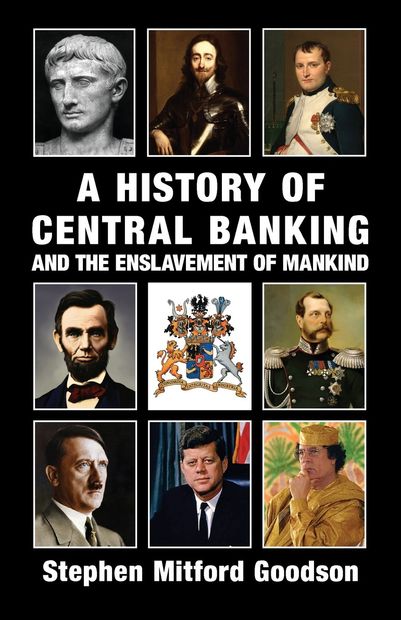
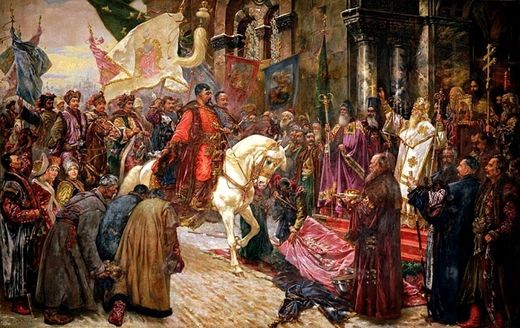
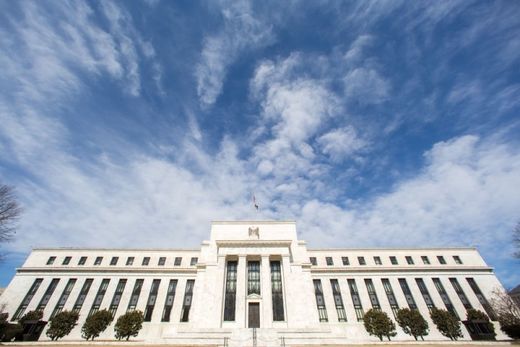
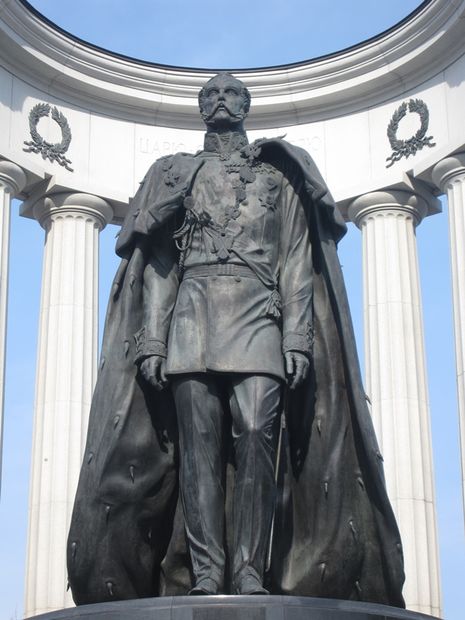
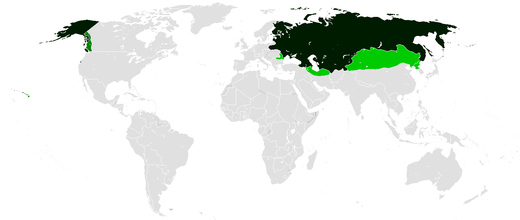



Wanted to say though -
"This book is not a study in technical economics. It is, thankfully, a study in history. Goodson realizes what most economists do not: that to grasp any economic phenomenon, it must be seen as a product of many decades of historical development. Each aspect of the whole continually reinforces the other, and the whole itself is constantly changing, like an organism, as history continues to present new challenges, new projects and new victims."
The time factor for all of the threads in the web is so important. The seeds are well planted before each generation. It's genius really. Gives an idea of the scope the overarching view has.